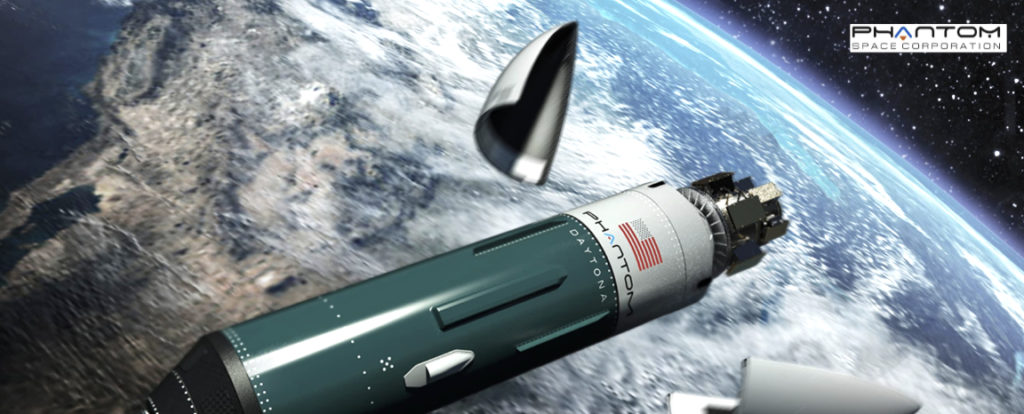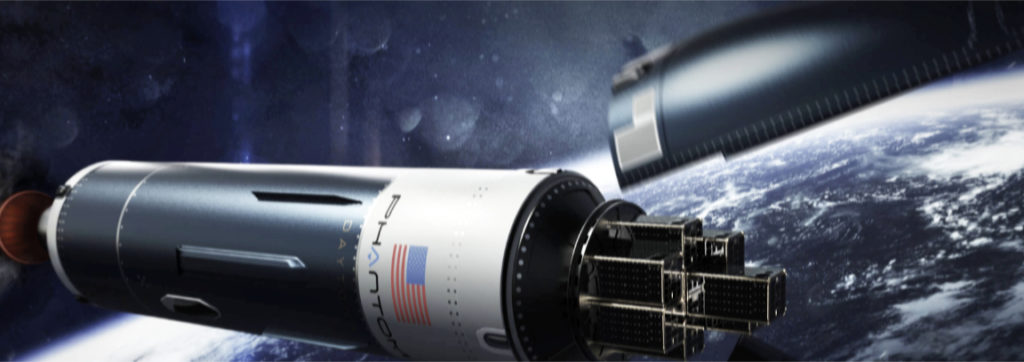
Phantom Space Corporation (Phantom) has completed a successful stage hot fire test at Spaceport America in New Mexico — Phantom’s pathfinder test stage, equipped with a single Hadley engine supplied by Ursa Major, completed a 60 second hot fire test to validate first and second stage systems that will be used in the Phantom Daytona Launch System.

This major milestone moves Phantom closer to the company’s goal of launching their first Daytona rocket by the end of next year, four years after the startup company was formed. More stage testing is planned for 2023, where the nine-engine, first stage will be tested at Phantom’s Tucson-based test facility that is currently under development.
The Daytona launch vehicle will become the company’s workhorse capable of putting 450 kg. into LEO for less than four million dollars. Launches will occur from Phantom’s west coast facility at Vandenberg Space Force Base and from Cape Canaveral Space Force station and will serve low, middle, and high inclination orbits with routine flights out of each coast.
The successful hot fire test follows Phantom’s purchase agreement with Ursa Major, America’s only privately funded company that is focused solely on propulsion, for more than 200 rocket engines, including the 5,000-pound thrust Hadley engine powering the hot fire test.

Phantom plans to employ mass production technology and techniques to the launch vehicle and satellite systems they are building to lower costs and increase the frequency of space access for both governments and commercial groups. Together, this will lower the barriers for more organizations to rapidly get their assets and ideas into space and will massively stimulate the space economy and ecosystem.
Chris Thompson, Phantom’s CTO said, “I’m very proud of the Phantom team and our partner Ursa Major Technologies in achieving this major milestone supporting the development of our Daytona Launch System. The 60 second test conducted at Spaceport America in New Mexico – our interim test site, was conducted very smoothly. The test ran the planned full duration of 60 seconds with all vehicle and ground systems working nominally leading to a smooth shutdown. The pathfinder test stage used in this test is a combination of first and second stage elements that has allowed us to test all major elements of the Daytona Launch System.”
Jim Cantrell, Phantom’s CEO and co-founder, said, “This hot-fire test is an important step for us in the development of the Daytona launch vehicle. The test proved out about 75% of the vehicles systems in a flight realistic condition and places us firmly on our way to testing the first stage with all nine of its engines.”
“The typical timeframe for orbital launch is around seven years, whereas Phantom is three years in; targeting first launch late next year. It’s a great day and today’s events illustrate that we’re one step closer to helping businesses access space on their terms and in the most cost-effective way possible,” said Mark Lester, Phantom’s Chief Operating Officer.
“Ursa Major is thrilled to support Phantom’s successful hot fire test and take a step closer to seeing our Hadley engines fly aboard the Daytona Launch System,” said Joe Laurienti, Ursa Major CEO and Founder. “This is an important step in giving the space launch industry a record time to market without sacrificing performance or cost. This milestone is just the beginning of the larger impact partnerships like ours can have.”
Phantom Space, using its own proprietary satellite designs, aims to be an all-in-one provider serving as launch service, satellite designer and builder, and manager of satellite farms or constellations.
